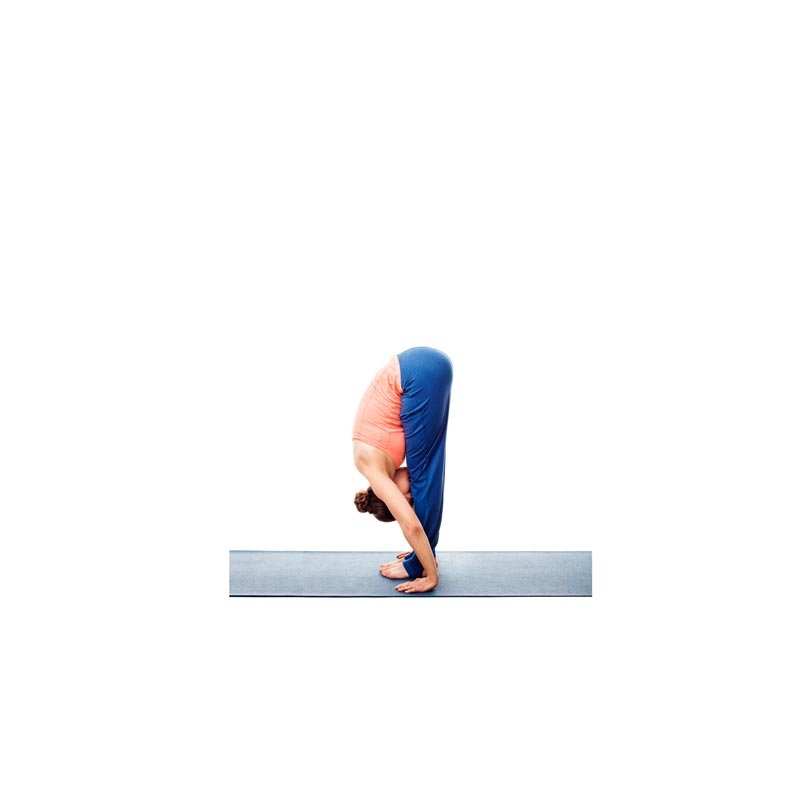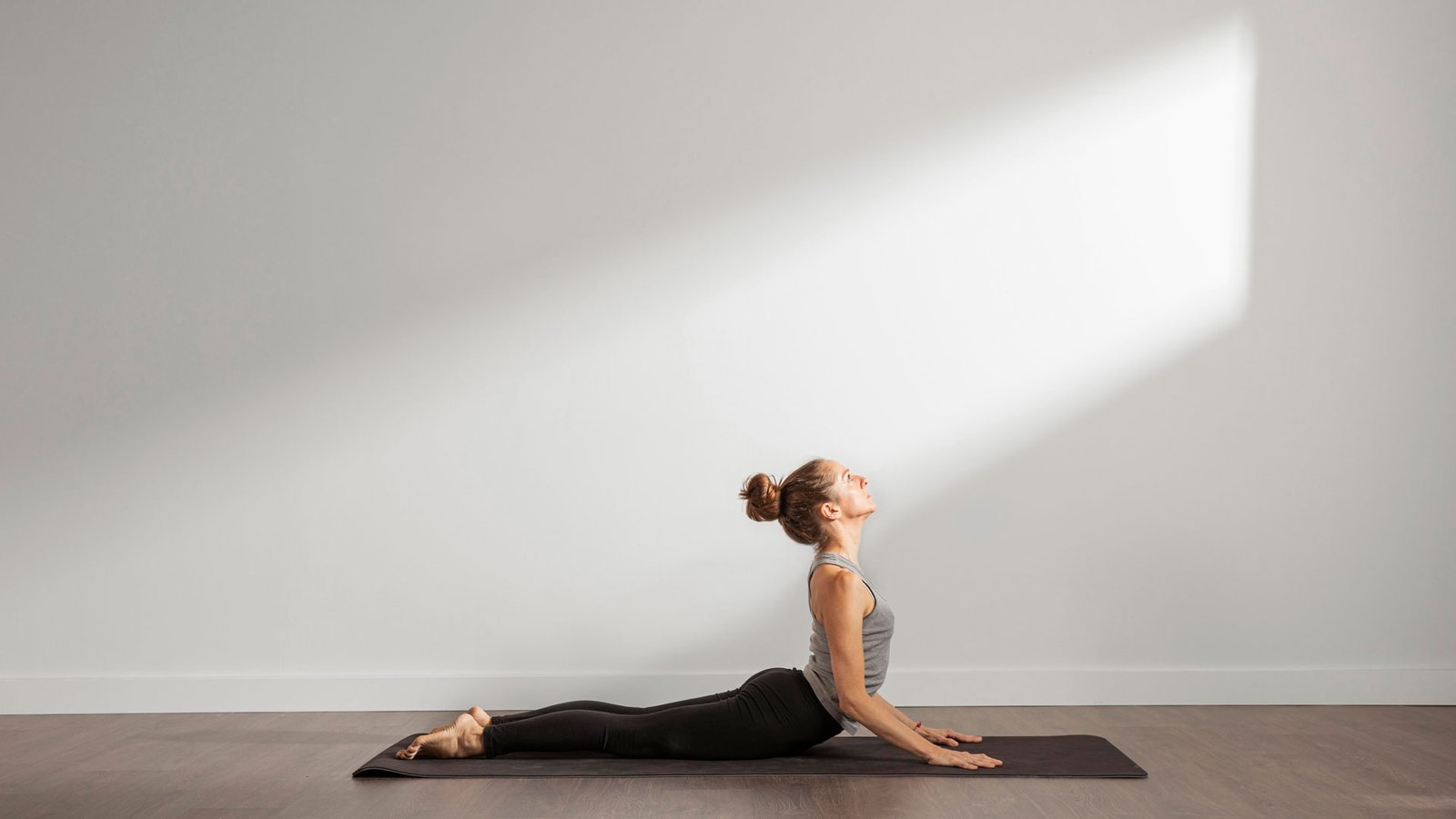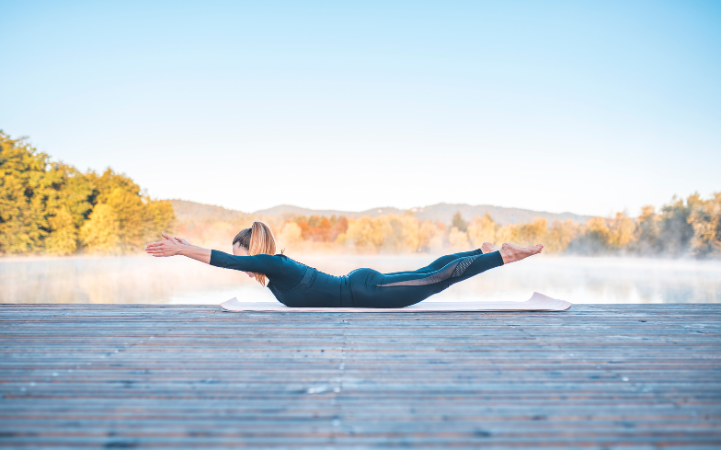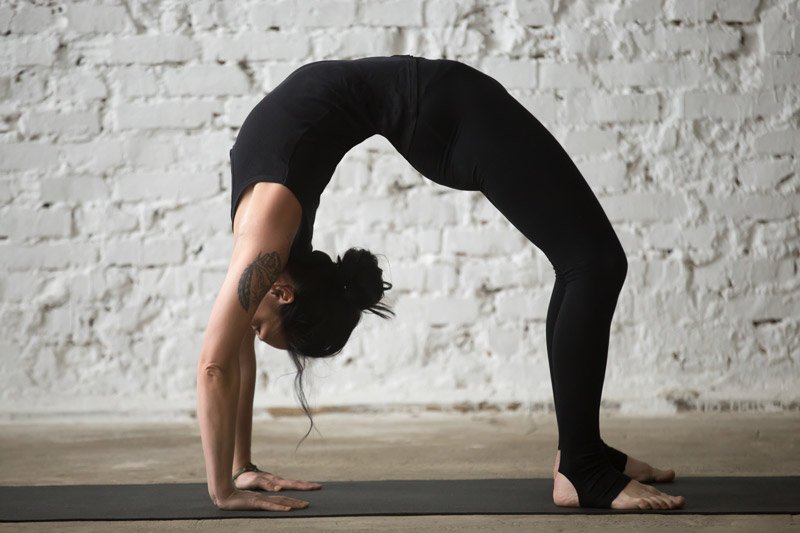Padhastasana, also known as the Hand-to-Foot Pose, is a forward-bending yoga posture that promotes flexibility, improves blood circulation, and soothes the mind. The term comes from the Sanskrit words Pada (foot), Hasta (hand), and Asana (pose), reflecting the gesture of bringing the hands to the feet. While this asana offers numerous benefits, it requires mindful practice to avoid strain, particularly for beginners or those with limited flexibility.
Steps to Practice Padhastasana
- Starting Position: Begin in Tadasana (Mountain Pose) with your feet together and arms relaxed by your sides.
- Inhale and Lengthen: Raise your arms overhead as you take a deep inhale, elongating your spine.
- Exhale and Bend Forward: Hinge at your hips and slowly bend forward, bringing your torso toward your thighs. Allow your head and neck to relax completely.
- Place Your Hands: Place your palms under your feet, with your toes touching your wrists. If this is challenging, rest your hands on your shins or ankles.
- Engage Your Muscles: Keep your legs straight but avoid locking your knees. Engage your thigh muscles to support the stretch.
- Hold the Pose: Breathe deeply and hold the position for 15–30 seconds, or longer if comfortable.
- Return to Standing: To release, inhale as you lift your torso back up with control, returning to Tadasana.
Benefits of Padhastasana
Pros:
- Improves Flexibility: Stretches the hamstrings, calves, and spine, gradually increasing overall flexibility.
- Strengthens the Legs: Engages and tones the thigh and calf muscles.
- Boosts Circulation: Increases blood flow to the head, promoting a sense of rejuvenation and mental clarity.
- Relieves Stress: The forward bend calms the nervous system, helping to alleviate stress and anxiety.
- Improves Digestion: The compression of the abdomen massages internal organs, enhancing digestive efficiency.
- Encourages Postural Awareness: Helps correct posture by stretching and lengthening the spine.
Cons:
- Strain for Beginners: Limited flexibility can make the pose challenging, potentially causing discomfort if forced.
- Risk of Overstretching: Improper alignment or excessive effort may lead to strain in the lower back or hamstrings.
- Dizziness: Bending forward can cause dizziness for individuals with low blood pressure.
Tips for Practicing Padhastasana
- Warm Up First: Prepare your body with gentle stretches to reduce the risk of strain.
- Use Modifications: If touching the feet is difficult, use yoga blocks or bend your knees slightly to accommodate your current flexibility.
- Engage the Thighs: Activating your thigh muscles protects the knees and enhances the stretch.
- Relax the Neck: Avoid holding tension in your neck; let your head hang freely.
- Breathe Deeply: Focus on your breath to deepen the stretch and maintain relaxation.
Cautions and Contraindications
- Back Issues: Avoid this pose if you have lower back pain or spinal injuries unless guided by a yoga instructor.
- Hamstring Injuries: Practice with caution or avoid if you have strained hamstrings.
- High or Low Blood Pressure: Individuals with blood pressure concerns should enter and exit the pose slowly to avoid dizziness.
- Pregnancy: Pregnant practitioners should avoid deep forward bends to prevent compressing the abdomen.
- Joint Problems: Those with knee or hip issues should modify the pose to suit their comfort level.
Padhastasana is a powerful pose for enhancing flexibility and promoting relaxation. When practiced mindfully, it offers significant physical and mental benefits, such as improved posture, reduced stress, and better digestion. However, it’s crucial to approach the pose with patience and respect for your body’s limits to avoid overstretching or injury. Incorporating modifications or practicing under guidance can help beginners build confidence while gradually unlocking the full potential of this rejuvenating posture.






